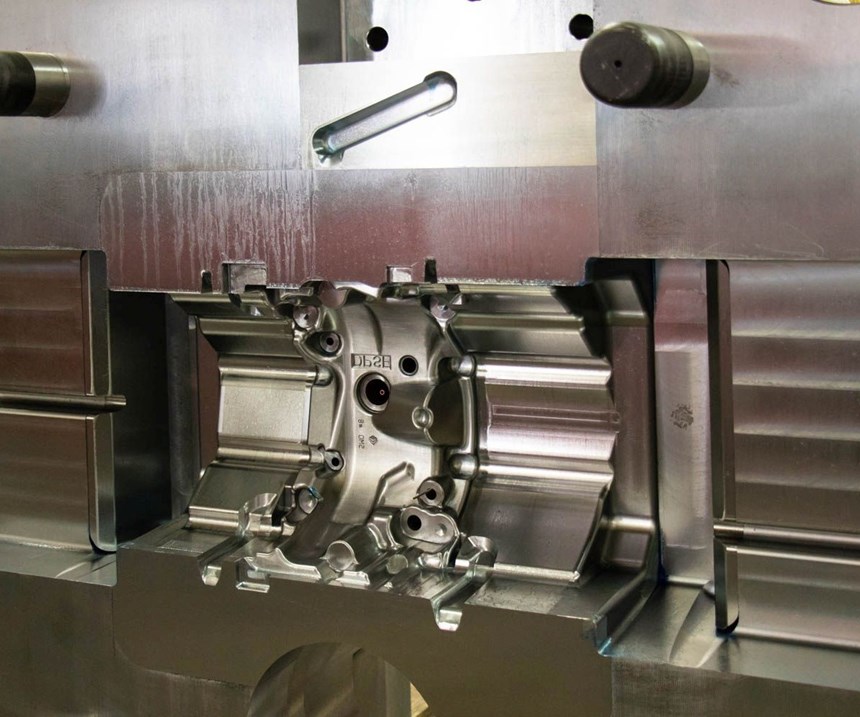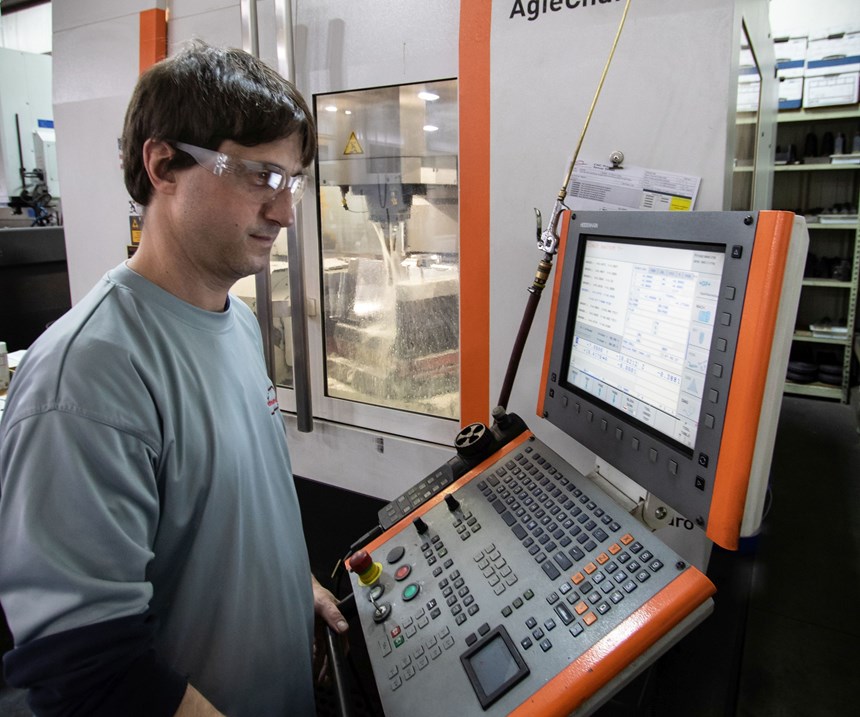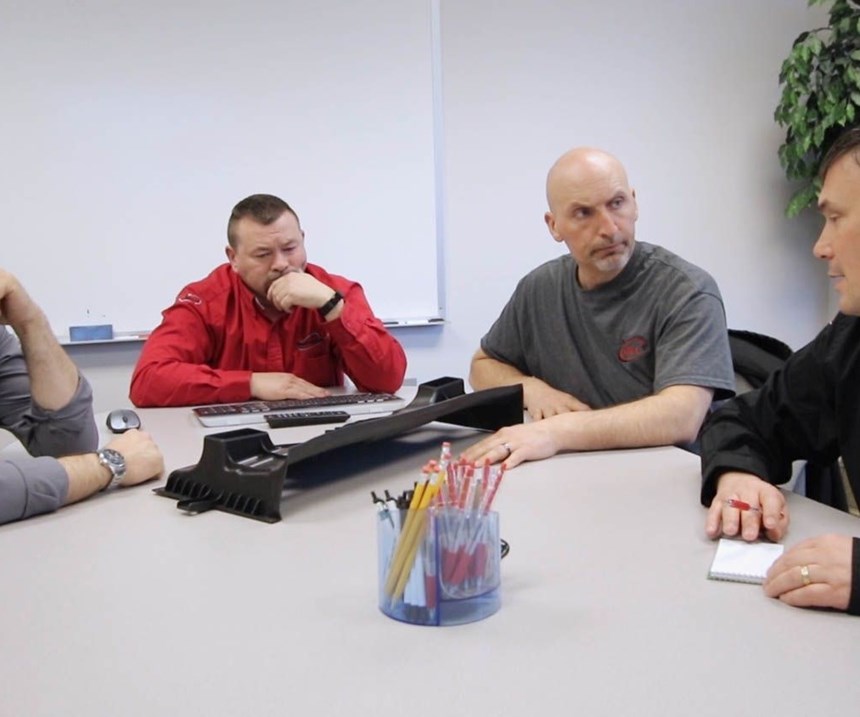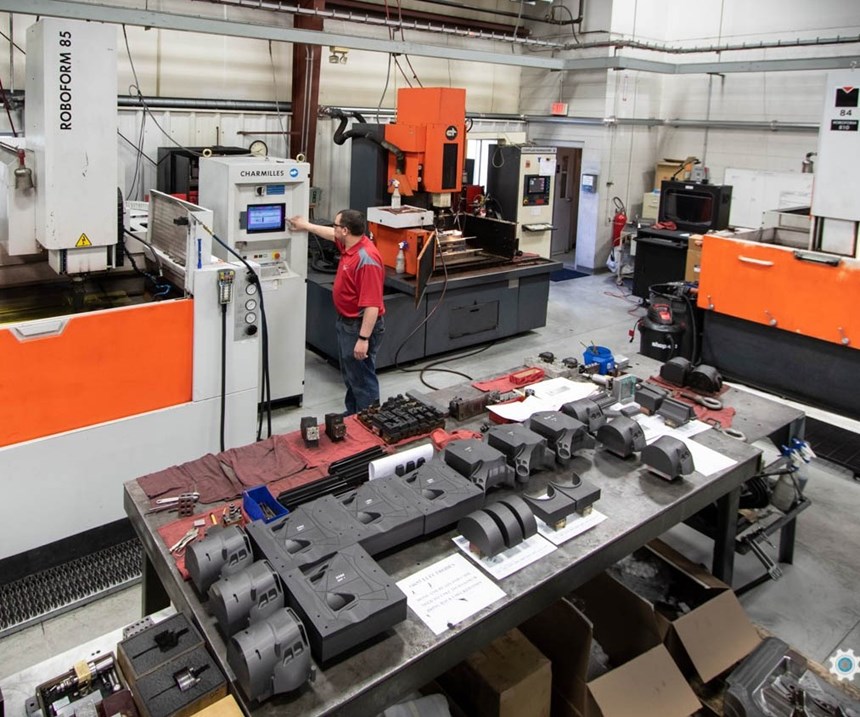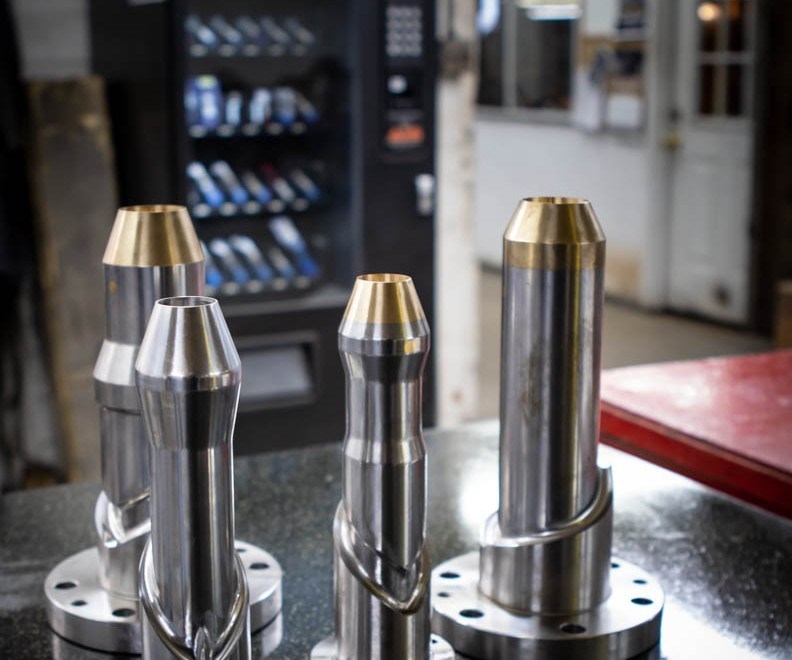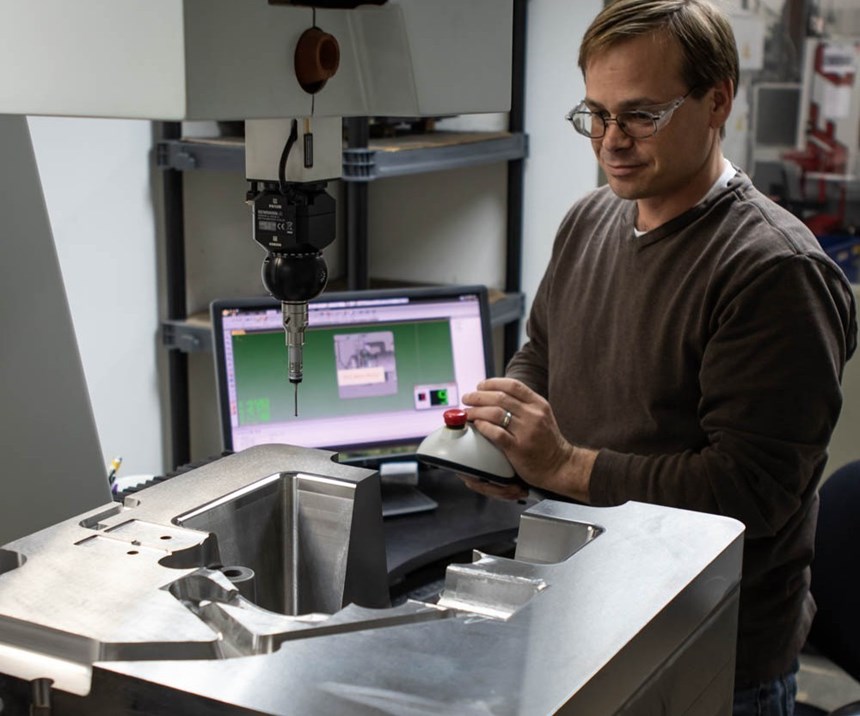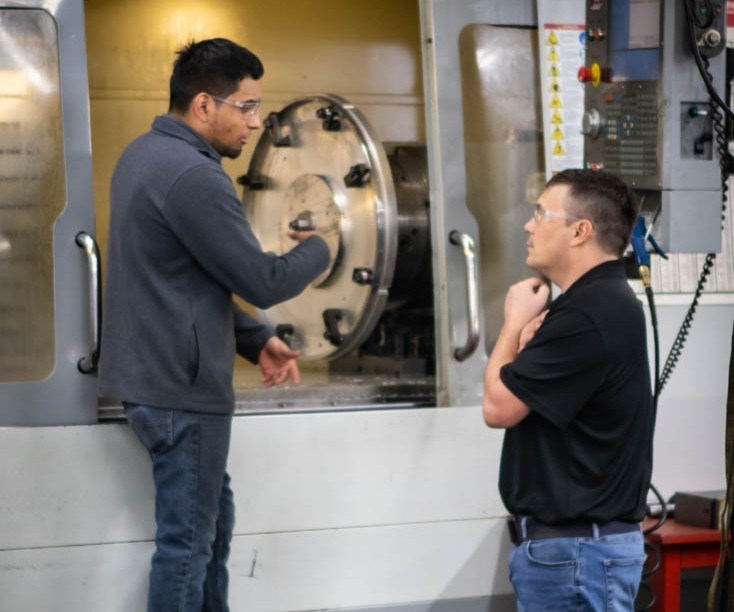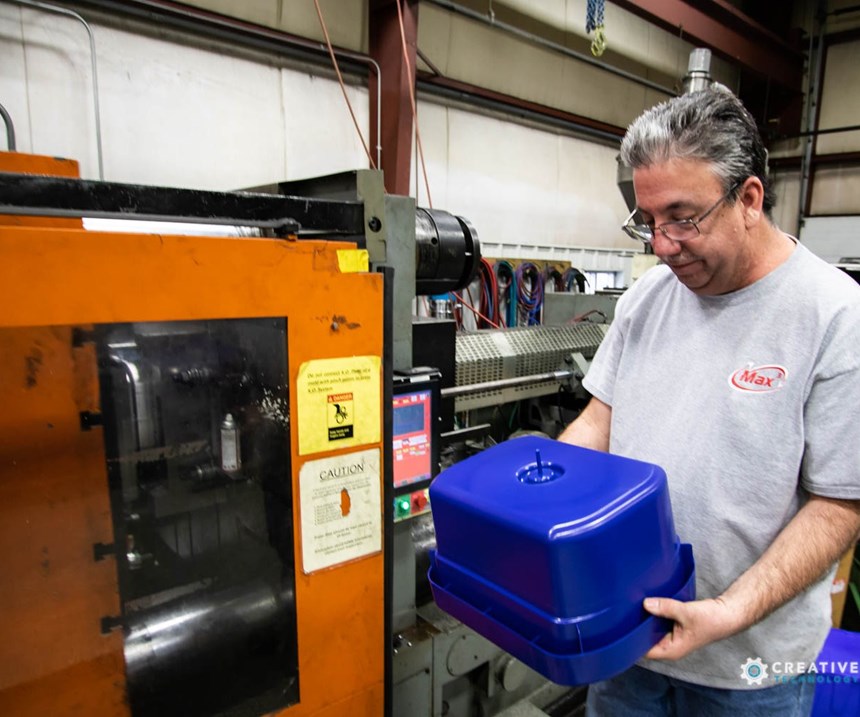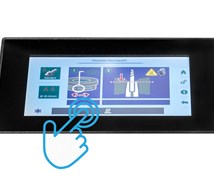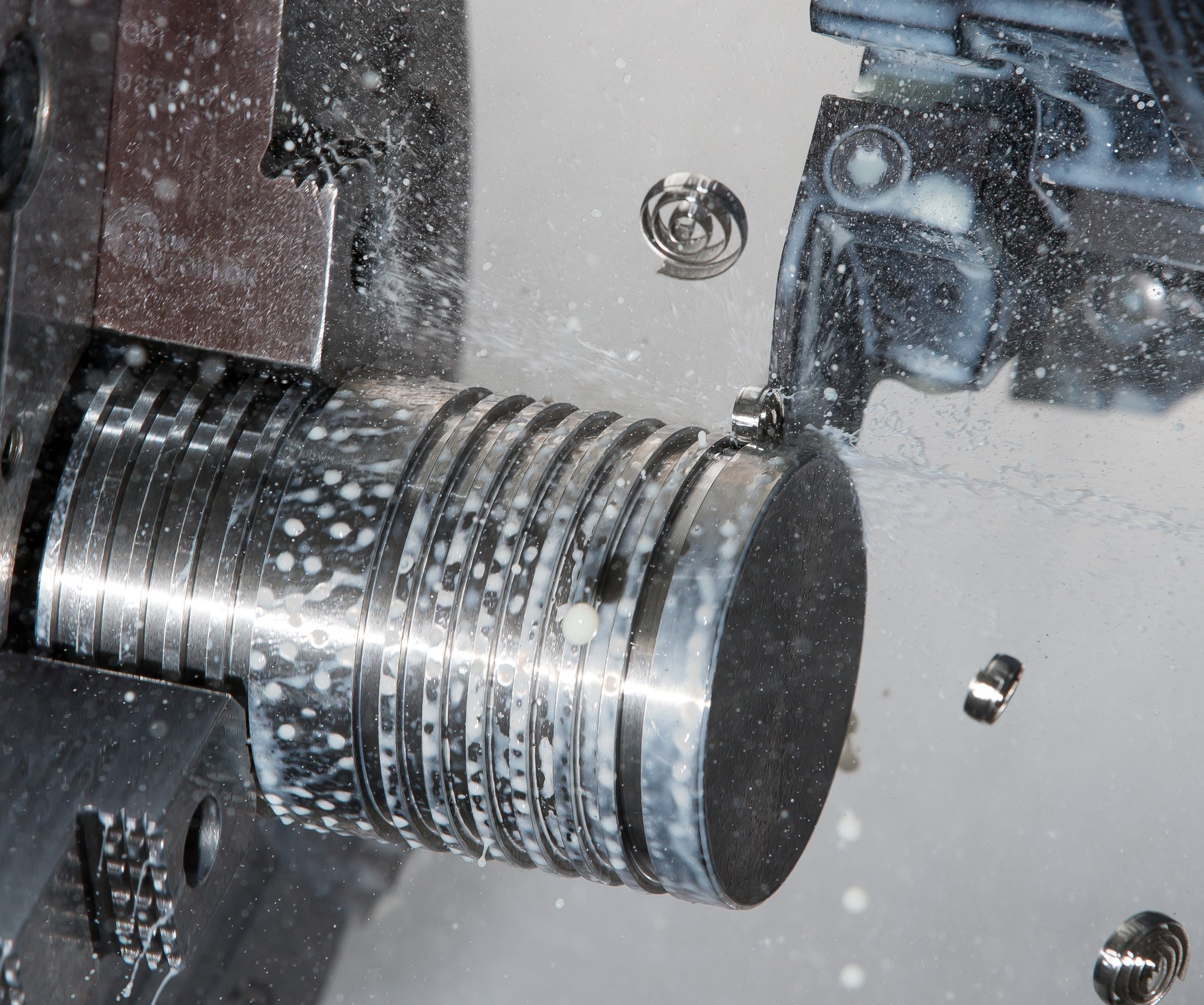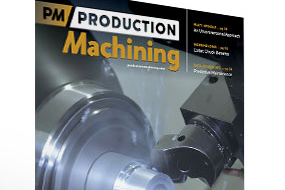2018 Leadtime Leader Award Winner: Maximum Mold Group
Strategic acquisitions and diversified capabilities combined with a can-do, inclusive culture take this mold manufacturer to new heights.
最大模组的文化都是关于it done—whatever a customer needs, team members from this assemblage of three companies put things into high gear and make it happen. At risk of sounding “punny,” parent company Maximum Mold states on its website that it “molds” its processes to meet customers’ needs, and it demonstrates this by taking its capabilities “to the max” and tackling challenging jobs that others will not touch. This confident, inclusive company culture is why Maximum Mold (also called Max 1) has expanded twice since its founding by owner and President David LaGrow in 1996. These qualities certainly helpedMaximum MoldGroupwin the 2018 Leadtime Leader Award.
LaGrow says that he had one single purpose in mind when he established Maximum Mold in Benton Harbor, Michigan: “to provide customers with a better alternative for tooling development.” He believes that customers “deserve a better partner who understands their businesses, their needs, their challenges and their realities.” This singular objective remains today and is reflected in the caliber of experience offered by the teams working under the Maximum Mold Group umbrella as well as by the continual investment in state-of-the-art machinery and equipment. Even the company’s location is by design, as it is advantageously located within a two- to three-hour drive of Chicago, Indianapolis and Detroit and within a couple hours of strategic vendors of heat treating, tool steel and surface coating services. “We believe that the best results are achieved through teamwork, which means working together in person, not just over the phone or e-mail,” LaGrow says.
Featured Content
Maximum Mold Group serves the die casting, injection-molding and blow-molding markets, offering complete project management from concept and design to sampling and production. Types of tooling that it builds include prototype molds and dies, molds with undercuts, two-shot molds, injection molds with rotating cores, trim dies, high-pressure die cast dies, rack-and-pinion dies, low-pressure die cast dies with hard plumbing, high-pressure dies with vacuum assist, valve body dies and more. Primary markets that it serves include the automotive, aerospace and appliances industries, though the company also builds tooling for the medical, packaging, agricultural, telecom and wind-turbine industries.
Maximum Times Three
Maximum Mold Group is made up of three independent companies, each with its own list of service offerings. The original plant is Maximum Mold (again, now called Max 1), which has 28 employees and manufactures trim dies, die cast dies and plastic injection molds using full engineering, three- and five-axis CNC machining, sinker and wire EDM and coordinate measuring machine (CMM) and mold polishing capabilities (seesidebar设备清单)。该公司由LaGrow with vital support from a trusted team including his wife, Cindy, was launched in 1996. Then, in 2009, when many moldmakers were shutting their doors, LaGrow bought a larger building to expand. “I had a lot of people telling me that I was crazy to buy a building, not to mention purchase three new pieces of equipment,” he says. Despite the concerns, LaGrow persevered, bolstered by a passion for moldmaking. The company went along well for several years, building molds and dies for customers who valued its commitment to quality and partnership. Then in October 2015, the opportunity arose to purchase the assets of Michigan Mold in Coloma, Michigan. LaGrow felt that it was a good time to expand his company by adding precision expertise in CNC lathe and turning. He renamed the new divisionMax 2 LLC.
“老实说,我并不是在寻求收购another company, but I knew the owner of Michigan Mold, and he was looking to sell the company and asked me if I was interested,” LaGrow says. He saw the opportunity to diversify and grow but says it was a leap of faith because there would be no work in progress when he took over. There were 13 employees who had valuable expertise that he did not want to lose, but that also came with regular paychecks and rent that had to be paid. “We met with the employees, and they wanted to stay in their jobs, and they wanted to excel and do some things differently. It took about six months for our sales team to land the work we needed to get it back up and running,” he says, adding that business has been going well ever since. While Max 2 primarily serves the capital equipment industry, it also produces precision components for molds and dies and the aerospace industry. Naturally, Max 1 and Max 3 are customers. “Previously, we were subbing out a lot of this work, but now we have this capability in-house, which has been an advantage,” he says.
“老实说,我并不是在寻求收购another company.”
With regard toMax 3LLC, LaGrow came upon another opportunity to acquire a mold shop nearly twice the size of Max 1 in 2017. That company was former employer Mach Mold Inc., located just around the corner from Max 1 in Benton Harbor. Owner Bill Mach was looking to retire and pursue other interests, so LaGrow bought the whole operation including the equipment, the customer list and the work in progress. He also kept all of Mach Mold’s 42 employees. He implemented the same benefits program to maintain consistency between the three companies. “Bill agreed to stay on during the transition, too, which has been helpful,” LaGrow says. “Adding Mach Mold’s capabilities to that of Max 1’s has been very advantageous. We can take on larger projects, build physically larger molds and continue building on the valuable relationships Mach Mold had with its established customer base, which is primarily automotive.”
Maintaining Maximum Performance
最大模组构建模具从那些that are micro-sized up to 1600-ton press-size and die cast dies can be as large as six feet by six feet, according to LaGrow who adds that 1,000-ton molds are the company’s “sweet spot.” The company reports lead times of six to eight weeks on small molds, 16 weeks on large tools and 25 to 30 weeks on multiple, complex molds. The company delivers those molds on time at a rate of 95 percent. “Some of our customers have asked us to accelerate the timeline to expedite their delivery to their final customers, and we try to accommodate them,” LaGrow says. “We are able to maintain faster lead times because we run our operations in cells, so certain machines are matched with certain other machines to handle specific types of jobs. We design our tooling one-to-one based on tolerances that our customers require and program the cutter paths before work begins so that workpieces move seamlessly between the machines in the cell. This reduces the need for physically handling workpieces and reduces the risk for error.”
It is clear that LaGrow cannot contain his excitement and passion for what he does when he says that Maximum Mold Group “is capable of turning around the largest and most complex tool projects, including dies for transmission housings and, most recently, a 1+1 two-shot injection mold with two different cavity shapes, hard shots on top and soft on the bottom, with slides moving inside of slides and an 18-drop manifold.” LaGrow says that despite the company’s small size, the team believes it can compete with the largest shops because it has standardized and refined its processes and invested in current technology. An example is the new Shoptech-E2 web-based enterprise resource planning (ERP) system that the company invested in and installed at Max 3. “Max 3 was a company that did everything by hand or paper. Max 1 and Max 2 already use E2 and are paperless companies. E2 enables our employees to electronically clock in and out of work each day, sign in to and off jobs, track hours and materials purchased for tooling projects and know with certainty our true capacity and availability of machine time, which helps us ensure that every job is completed on schedule,” LaGrow says. In addition, the E2 system is also integrated with each of the company’s tool crib vending machines, which enables Maximum Mold Group to more accurately quote jobs and facilitate precise job costing and time tracking to ensure that the company is profitable on jobs.
Max 1’s first-pass quality rate remains steady at 98 percent. This is due, in part, to the company’s quality system, which includes CMM inspections on all outgoing dies and molds. Throughout the mold building phase, the company provides customers with progress reports that include Gantt charts and photographs when they are requested. “We use our Nikon Metris LK V 10.7.6. CMM machine to measure and document all electrodes prior to production and all critical workpieces after production,” LaGrow says. “If we find something that is out of tolerance, we immediately call our customer contact to let him or her know what we found and how we can correct it. Sometimes it is something that was missed at the project kick-off meeting, and we will go back to what was discussed and work with the customer to resolve the issue. It is a partnership, and we are always open and honest about the work that is being done here.” Often, Maximum Mold Group is on the receiving end of transfer tools without any data. “That’s where having the CMM scanning capability is particularly beneficial,” he says.
In addition, the Maximum Mold Group is ISO 9001:2015 certified for quality management systems as they pertain to the manufacturing of die cast dies, plastic injection molds, contract machining and fixtures. It is a distinction that the company embraces at all levels of its culture. “We live and breathe ISO, standardization, risk reductions and continuous improvement strategies. We have processes for everything, and we don’t cut corners,” LaGrow says. For example, at Maximum 1, every steel-cutting machine has the exact same tooling setup so that any CAM program can be run in any of the machines. All programming is done using the same tool library, too, which is part of the company’s ISO standards. In addition, every electrode made goes under the CMM before it is placed into an EDM machine, and everything is documented to ensure quality and accuracy. Every team member is trained to use manual devices that are used for inspection as well, and every device is calibrated according to ISO requirements. Traceability is particularly important, according to LaGrow. “Using the E2 System at all three facilities helps us track who is using what machine for what job, what is quoted, what is required by the customer, what material is being used and much more,” he says. “The E2 system makes it so much easier for us to earn and maintain our ISO certification. It makes us a better company because when we say what we are going to do, and then we do what we say, it makes everyone’s life that much easier across all three companies.”
“We have gone to great lengths to ensure that we know and understand our customers’ needs and expectations and their methods of doing business.”
Regarding continuous improvement, it is evident that the Maximum Mold Group strives to advance. For example, lead times for 2017 have improved over 2016. “Lead times were shorter last year compared to 2016 because we increased the capacity of our in-house design and engineering services,” LaGrow says. “We took two employees off the shop floor at Max 1 to train them. One of them moved over to Max 3 to be a designer, and we invested in two new seats of Vero Software’s VISI software there. The second employee wants to become an engineer and will start training soon at Max 1. We will then have six designers and all of them journeymen toolmakers.”
如前所述,持续改进的思想set is company-wide. LaGrow relies on the input of his design and engineering staff who research new and better ways to run the business. “We have meetings that involve team members from all three companies whenever we kick off a new job. The designers and engineers give input on the job timeline, design, components and materials to ensure that we are as efficient as possible,” he says. “We have gone to great lengths to ensure that we know and understand our customers’ needs and expectations and their methods of doing business. I have even traveled with my sales team to Germany, China and Mexico to work with our customers on specific design changes.” While in China, LaGrow made arrangements so that Max 1 is a service center for two Chinese mold shops that build tooling for a mutual customer. LaGrow wants to build tools in the United States to export to Chinese original equipment manufacturers for production. He even exhibited at a die casting exposition in China in 2016 to try to open a door, but it has not been easy. “We were the only U.S. company at the show,” LaGrow says. “I know there are some obstacles, but I still want to be one of the first companies to land a U.S.-made tool in China.”
Selling Maximum Experience
Maximum Mold Group sells experience. In fact, its entire sales team is made up of six journeyman moldmakers who use their shop-floor experiences to fully understand customers’ needs. They can typically secure a purchase order within 10 days of quotation, on average. “Our salesmen have been known to work on tools in the press during sales visits at our respective customer locations,” LaGrow notes. Going the extra mile is routine, and it is made possible because of the “can-do” culture that is built into every level of service. “Our customers depend on our responsiveness and quality craftsmanship. Recently, a customer brought us three tools built by another shop so that we could repair and fit the molds to run right,” he says. “On another occasion, Ford Motor Company wanted our customer to expedite a four-cavity mold build in four weeks. We pushed this tool build and made the accelerated delivery with first-shot approval.” It is service like this that has helped Maximum Mold Group increase its sales in 2017 by 20 percent over 2016. Additionally, the company reports that 28 percent of the customers served in 2017 were new customers, with 100 percent of them fully referred by other customers.
Maximum Mold Group is careful not to “max out” its capabilities, however. LaGrow says customer service is about more than just producing a product, and his team works hard to ensure that promises are kept and not oversold. This is possible, in part, because, like their sales team counterparts, the five engineers who work on behalf of all three companies have backgrounds as machinists and toolmakers. And, LaGrow says that customers appreciate that his team can see projects from their perspectives, taking into consideration things like manufacturability, cooling, shrinkage and draft characteristics and even mold maintenance requirements that keep the tools running as expected with as little hassle as possible. Maximum Mold Group offers service contracts upon project completion and provides customers with on-site troubleshooting to ensure that desired results are met during sampling, and service hours are 24 hours a day, 365 days a year. The group of companies also conducts annual customer surveys and holds review meetings with customers at the end of a tooling project. “Customer feedback is included in our company’s ISO policy to help with continuous improvement objectives throughout the year,” LaGrow says. “We try to maintain an open line of communication with our customers and keep an open-door policy when they have questions on upcoming projects. Doing this can only make our company stronger.”
Each year, Maximum Mold Group works withKM Industrial Machinery Co., a machine tool supplier out of Kalamazoo, Michigan, to address Maximum Mold Group’s capacity needs and invest more than $500,000 in new machinery. “For example, Max 1 recently purchased a new AgieCharmilles Cut 30 P Wire EDM machine, a new AgieCharmilles Mikron UCP 800 Duro five-axis machining center, and, for Max 2, a new Haas three-axis CNC mill to ensure that we have the fastest,most efficient and accurate machines with which to complete customers’ projects.” Max 3 is also slated to take delivery of a used Krauss-Maffei 1,000-ton molding machine with a robot this month to provide a customer with Production Part Approval Process (PPAP), enabling delivery of a production-ready mold without the time and expense of shipping it back and forth.
A Maximum Team
LaGrow一直努力维持一致的cohesive culture between Max 1, Max 2 and Max 3. “Each of our shops has the needed equipment, the same five-axis machining technology, the same design software, but it’s the people that set us apart from other tool manufacturers,” he says. “We pull from our team’s vast knowledge and skills to ensure that we are building a complete tool that meets or exceeds our customers’ expectations. But even more than that, we really are like a family in the way we sit down at Maximum Mold Group and discuss projects and the group’s strategic direction. It is during these meetings that team members express their ideas and their concerns.” Some examples of the inclusive nature of the Maximum Mold Group include the two-hour mandatory Monday meetings with the group’s management team to discuss current and upcoming projects at each plant, any customer concerns or questions, quoting, scheduling and so on. LaGrow also makes it a point to spend time at each facility every day to touch base with his employees and to ensure that things are running smoothly. When he is considering expanding the company or making a major equipment purchase, he turns to his employees for input. “We share our plans and ask our team to offer ideas on it. We ask them where they think we should go next, or what we need to do next and how to keep us on a pathway for growth,” LaGrow says. “We meet one-on-one and as a group with every employee to hear from his or her perspective on what’s working and what isn’t. We believe this sets us apart from other tool shops.”
Maximum Recruitment and Training
与三家公司提供各种均nt capabilities, maintaining a viable workforce now and for the future can be a challenge. Max 1 has eight apprentices and 13 of its 75 employees are under the age of 25. The company plans to hire three more apprentices this year. “Part of our recruiting strategy is to have our current employees discuss our company environment with potential candidates,” LaGrow says. “We can say all we want about the company and how good we think we are, but we believe it is best if it comes from team members.” Recently, students from Coloma High School were invited to tour the shops in March and two of the boys told LaGrow that they were genuinely interested and asked how they could get involved. “Coloma High School has a very good machinist program,” he says. “Through a grant program with Lake Michigan College, we can bring in three full-time apprentices at no cost to us. They will be paid $10 an hour and will work here part of every day and then go to school, and they will be paid for the time in school. All their classes and books are paid for 100 percent. It’s a great program.” He says that Max 1 is currently searching for a third apprentice to take advantage of the grant. They want and need apprentices. “Our guys are not getting any younger, and while no one is looking to retire very soon, we still have to be focused on training the next generation.”
Critical to the company’s recruitment process is maintaining solid relationships with local schools like Lake Michigan College. LaGrow says that the company offers the employees training at the college each year so that they can keep their skills sharp. Five of the company’s eight apprentices are currently attending classes at the college. “Lake Michigan College is part of our annual budget preparation to ensure that its programs have the tools necessary to train apprentices,” he says. Each year, Maximum Mold Group donates supplies to the college ranging from cutting tools and other perishable items to used machines. Additionally, the group supports the Coloma Community School District’s tooling and robotics programs. “We have an open-door policy with the community schools mainly because we believe in the trade and want to ensure that the younger generation learns about it and understands the opportunities that are available,” he says. “No longer are tool shops dark and dirty. We employ state-of-the-art machines with high-tech machining centers that are computer controlled. When the students enter our shop, they are usually surprised by just how clean the shop is and impressed with the software that we use to design and engineer a tool. Some students have equated our techniques to running a video game, and it looks fun to them. Sometimes they ask us to provide input on projects they are working on.
“We can say all we want about the company and how good we think we are, but we believe it is best if it comes from team members.”
“We also are a member of the Berrien Tooling Coalition,” he continues. “The coalition is a group of 21 tool and die shops who share information on ways of doing business, hiring practices, technology, recruiting, sales, marketing and development. The coalition makes it possible for members to band their collective capabilities together to win large tooling packages.” The group meets monthly and networks and exchanges information. Annually, the group purchases and donates materials or supplies for local school districts and colleges that have either an apprentice program, tool shop courses or robotics courses. Part of this organization’s responsibilities include working with local high school shops and verifying curriculum for their shop classes and judging shop class contests, he says.
Reinforcing the family-like atmosphere, LaGrow offers his employees the flexibility they need to fulfill non-work obligations. “For example, our employees set their own hours. They know what they need to do to meet the company’s needs and we work with them so they can also spend quality time with their families, like attending school functions and sporting events, or taking a child to the doctor.” The company actively supports programs outside of the tooling spectrum, too, he says, like sponsoring football, baseball and softball teams, participating in an annual Toys for the Needy program in Benton Harbor and partaking in a program called “Shop with a Cop.” LaGrow asserts his belief that when employees are happy in their personal life, they are happy and more productive at work.
荣幸被任命为MoldMaking Technology’s 2018 Leadtime Leader, LaGrow says the Maximum Mold Group looks to further expand its capabilities. “Maximum Mold has reduced lead times through diversification of services offered and horsepower via the acquisition of Max 2 and Max 3,” he says. “In the future, the Maximum Mold Group plans to invest in five-axis bridge machines, the latest technology in EDM and workholding systems to continue to be a Leadtime Leader.”




